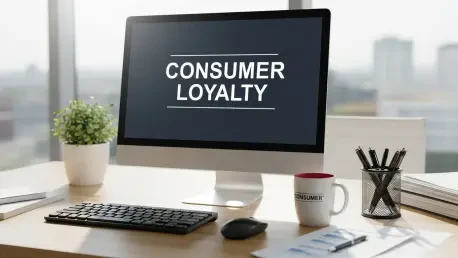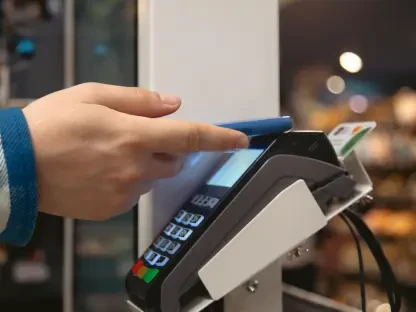In a world where every dollar counts, a staggering 92% of American consumers are reevaluating their spending habits, casting a shadow over the once-unshakable bond with their favorite brands, as they hesitate in store aisles over familiar products not due to lack of desire, but because of price concerns. This scene plays out across the nation as economic pressures force a rethink of loyalty. What drives this seismic shift, and how are brands responding to a customer base that’s more discerning than ever? The answers lie in a complex mix of financial caution, evolving technology, and changing values.
The importance of this transformation cannot be overstated. With 59% of Americans perceiving economic conditions as worse than they were a year ago, the ripple effects touch every corner of the market. Businesses face a loyalty crisis as 40% of consumers admit to diminished allegiance compared to just 12 months prior. This isn’t merely a trend—it’s a fundamental reshaping of how trust and engagement are built in an unpredictable economy. Understanding these dynamics is critical for brands aiming to stay relevant and for consumers navigating their own financial realities.
Why Consumers Are Questioning Brand Bonds
Economic uncertainty has created a perfect storm for brand relationships to falter. As household budgets tighten, the emotional ties that once kept customers returning are being tested by practical concerns. A significant 85% of shoppers have switched brands for economic reasons, prioritizing cost over nostalgia. This shift reveals a deeper truth: loyalty is no longer an automatic response but a calculated decision influenced by immediate financial needs.
Beyond just price, there’s a growing demand for transparency and relevance. Shoppers are asking whether a brand truly aligns with their current circumstances, especially when 95% expect their altered spending habits to persist long-term. This persistent caution means that companies can’t rely on past goodwill to maintain their customer base. Instead, they must prove their worth with every interaction, adapting to a mindset that values pragmatism over tradition.
The Economic Pressures Behind the Loyalty Divide
Rising costs and stagnant wages form the harsh backdrop to this loyalty crisis. For millions, the daily struggle to balance needs and wants has led to a reevaluation of where money goes. With 59% of Americans feeling the economic pinch more acutely than last year, discretionary spending is under intense scrutiny, pushing even loyal customers to seek alternatives that offer better deals or more immediate benefits.
This financial strain translates directly into behavior at the checkout. Data shows a clear trend: 40% of consumers feel less loyal to brands than they did recently, a sharp decline that signals trouble for businesses banking on repeat purchases. The implications are vast, affecting not only sales but also how companies plan marketing strategies in an environment where every dollar spent must justify itself to a skeptical audience.
Emerging Trends in Consumer Choices
The landscape of consumer behavior is undergoing a profound transformation driven by economic realities. Despite tighter budgets, intentional spending remains strong—89% of people still dine out, 79% invest in fashion, and 59% prioritize travel. This isn’t about reckless indulgence but a deliberate focus on value, where purchases are weighed for their worth rather than cut outright.
Value has emerged as the cornerstone of loyalty, with 74% of consumers citing “value for money” as their primary reason for sticking with a brand. Meanwhile, technology plays an increasing role, as 45% rely on AI-driven recommendations to guide decisions, extending research phases and opening new avenues for engagement. Additionally, streaming platforms, with an average of 5.3 services per user, have become a marketing frontier—24% find ads on these platforms more impactful now, highlighting a shift toward personalized advertising channels.
Real Stories and Expert Perspectives
Behind the numbers are real people making tough choices. Take the case of a single parent in Ohio who recently switched from a trusted grocery brand to a cheaper alternative, citing a 20% price difference as the deciding factor. Such stories underscore a broader sentiment: economic necessity often outweighs years of brand affinity, pushing consumers toward practicality over preference.
Industry voices echo these personal accounts with strategic clarity. Ryan Fitzgerald, co-founder and CEO of a leading data-driven media agency, emphasizes adaptability: “Brands that embed agility and data-driven strategies into their core culture will gain a competitive edge in this dynamic environment.” This insight aligns with consumer feedback, where 45% value logical benefits in ads, while 40% seek emotional resonance, illustrating the delicate balance brands must strike to rebuild trust.
Strategies for Brands to Regain Trust
For companies navigating this challenging terrain, actionable steps are essential to reconnect with cautious consumers. Prioritizing value perception tops the list—74% of shoppers base loyalty on affordability, so transparent pricing and meaningful loyalty programs that offer tangible savings can make a significant difference. Highlighting worth in every touchpoint is no longer optional but a necessity.
Equally important is crafting messages that resonate on multiple levels. Blending rational benefits, which matter to 45% of consumers, with emotional storytelling like humor, valued by 40%, creates ads that stick. Leveraging technology also offers a path forward—using AI insights to meet shoppers during extended research phases and investing in streaming ads on the 2.9 ad-supported services most use can capitalize on shifting media habits. Finally, staying agile with data ensures brands remain relevant, tracking consumer moods to tailor approaches swiftly in an unpredictable economy.
As the dust settles on these insights, it becomes clear that economic uncertainty has fundamentally altered the consumer-brand relationship. Brands that have listened and adapted find themselves better positioned, having woven value and relevance into their core offerings. Looking back, the successful ones prioritized data-driven agility, meeting consumers where they were with messages that balanced logic and emotion. For those still struggling, the path ahead involves embracing technology and streaming platforms as new engagement frontiers, ensuring every interaction demonstrates undeniable worth. This era of change, though challenging, has opened doors for innovation, urging brands to rethink loyalty not as a given, but as a continuous journey of trust-building.









